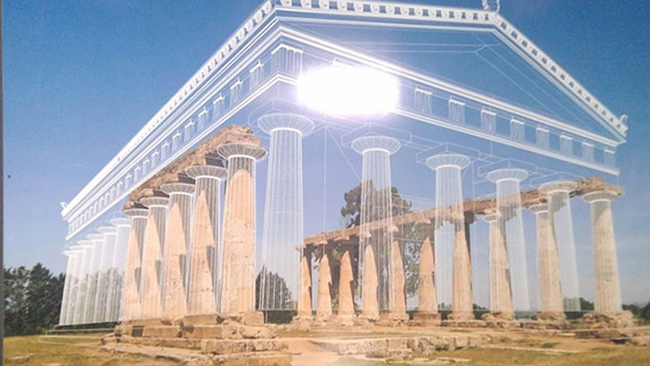Hera Temple of Metapontum
The virtual reconstruction of the Hera Temple at Metapontum offers archaeologists—and all of us—a vivid new lens on the past. Though the surviving ruins are fragmentary, modern technology lets us glimpse how this sacred place may have looked 2,600 years ago.
Wire-frame compositing
By analyzing every column drum, capital, and block still on site, researchers generate a 3-D wire-frame model that fills in what is missing. Layer by layer, the structure’s full Doric proportions emerge, turning scattered stones into an intelligible temple again.
Historical backdrop
Built in the 6th century BCE, this Doric sanctuary once honored Hera, queen of the Olympian gods. It stood near today’s Tavole Palatine in southern Italy—part of Magna Graecia, where Greek settlers fused Hellenic design with the Italian landscape. Even in ruin, the fluted columns preserve a sense of austere grandeur.
Why virtual archaeology matters
Digital reconstructions like this rescue lost monuments from obscurity. They help scholars test architectural hypotheses, guide conservation, and let the public experience vanished spaces first-hand—from classrooms to VR headsets.
Takeaway
Reanimating the Hera Temple shows how technology can reconnect us with vanished worlds. Virtual archaeology is not just a research tool; it is an invitation for anyone to walk among the stones and feel history come alive.
Sources
Gabellone, Francesco.
Virtual Archaeology: New Methodologies for Reconstruction and Communication.
Proceedings of the 17th International Conference on Cultural Heritage and New Technologies (CHNT), 2012.
Gabellone, Francesco & Ferrari, Ivana.
Discovering Ancient Metapontum: Technologies and Methodologies from Past to Present for a Virtual Visit Proposal.

